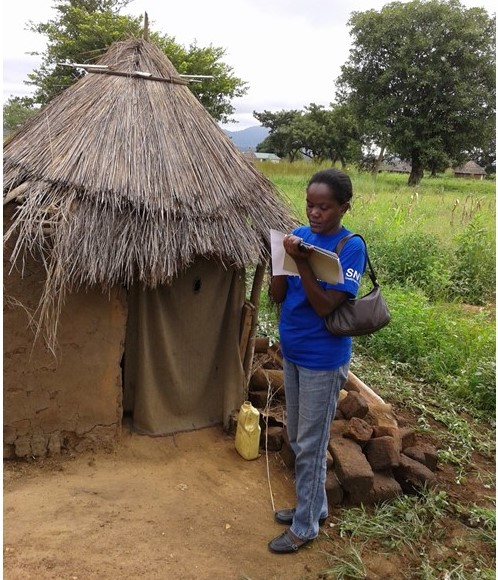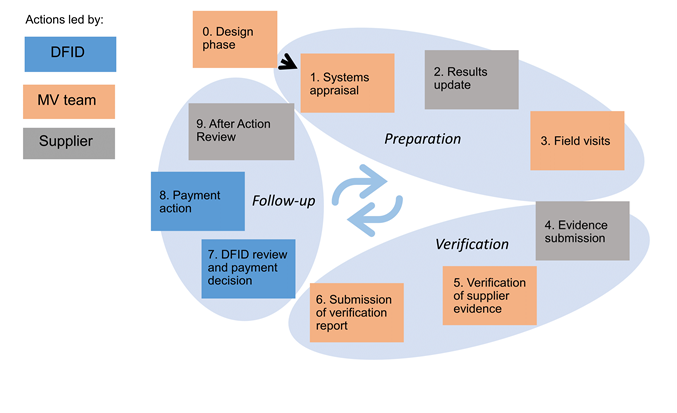 What do you need to consider when commissioning and designing a verification system? How do you go about creating a verification cycle, appraising monitoring systems or choosing good indicators? E-Pact has published a set of guidance notes to help others to design and implement an effective verification system, drawing on our experience from 2014-2020 as the Monitoring and Verification team for the DFID WASH Results Programme.
What do you need to consider when commissioning and designing a verification system? How do you go about creating a verification cycle, appraising monitoring systems or choosing good indicators? E-Pact has published a set of guidance notes to help others to design and implement an effective verification system, drawing on our experience from 2014-2020 as the Monitoring and Verification team for the DFID WASH Results Programme.
WASH Results is one of DFID’s flagship programmes in using Payment by Results (PbR) and with a £112 million budget is one of the first large-scale applications of PbR in the sector. The programme was conceived in 2013 during an era where DFID shifted programming towards longer-term results. An important rationale for the programme was to incentivise large-scale delivery of WASH under the Millennium Development Goals in 2015. This ambitious delivery goal was coupled with payment for outcomes to encourage the continued use of water supply, latrines and handwashing at critical times, in line with the SDG agenda.
Delivered by three consortia of non-governmental organisations (‘suppliers’), the programme has enabled over 1.6 million people to gain access to water, 7.4 million access to sanitation, and reached 16.1 million with hygiene promotion across 11 countries. The programme has also overwhelmingly achieved its outcome targets.
WASH Results operates under a ‘100 per cent’ PbR modality, whereby suppliers receive payments only on the successful verification of their results by a third-party Monitoring and Verification (MV) team. The verification was systems-based, meaning that Itad in collaboration with Ecorys and Iwel under the e-Pact consortium, independently verified the data reported by the suppliers. In this process, supplier monitoring and reporting systems are appraised and data they produce are verified by the third-party MV team to confirm they are accurate and realistic. This approach has benefits including value for money and those derived from strengthening suppliers’ own monitoring systems. This ‘systems-based’ approach to verification was completely novel at the time and over the past seven years, the verification team tested and refined its methods and processes and learned lessons, some of which are captured in our short series of publications.
The publications are intended to support organisations when commissioning, managing or implementing third-party verification services as part of PbR contracts and those interested in strengthening monitoring systems through third parties. The Guidance Note provides overarching lessons, useful at an early stage of thinking through the design of a PbR programme while the accompanying Verification in Practice Notes dive more deeply into key aspects of systems-based verification.

The DFID Payment by Results Guidance Note: Lessons from an effective verification system provides 12 lessons to inform the creation of a verification system. It covers three aspects: 1) getting the foundations right at design and tender stage, 2) designing the verification system so it is effective and efficient and avoids surprises when payment decisions are being made; and 3) the role of commissioners in a PbR contract compared to traditional grants.

Verification in Practice #1: The Verification Cycle – Step by Step In a PbR programme, suppliers only get paid when results have been independently verified and this requires a verification process that delivers good quality data in a timely and predictable manner. The MV team has put this into practice through a nine-step, three-month verification cycle, which is outlined in this note.
Verification in Practice #2: Appraising Monitoring Systems A key part of a “systems approach” to verification is the appraisal of supplier monitoring systems, known within the WASH Results Programme as a “systems appraisal”. This note explains how the MV team defines a systems appraisal, what it involves and why one can be useful. This will be of relevance to all those seeking to strengthen monitoring systems, not just those in PbR programmes.
Verification in Practice #3: What makes a good indicator for a Payment by Results programme? [PDF] Good quality indicators are essential to effective PbR programmes. This practical note suggests seven essential characteristics of a good PbR indicator and five additional characteristics that may be desirable.
We hope that this guidance drawn from our experience will be useful to you if you are commissioning or designing a verification system or just want to gain confidence in the reporting of results regardless of whether or not you decide to attach payment to it. After seven years and more than 50 rounds of verification we feel that we’ve got a bit of a handle on this, so please do get in touch if you have any questions and we encourage you to share your thoughts in the comments.
This post was originally published on the WASH Results blog.

